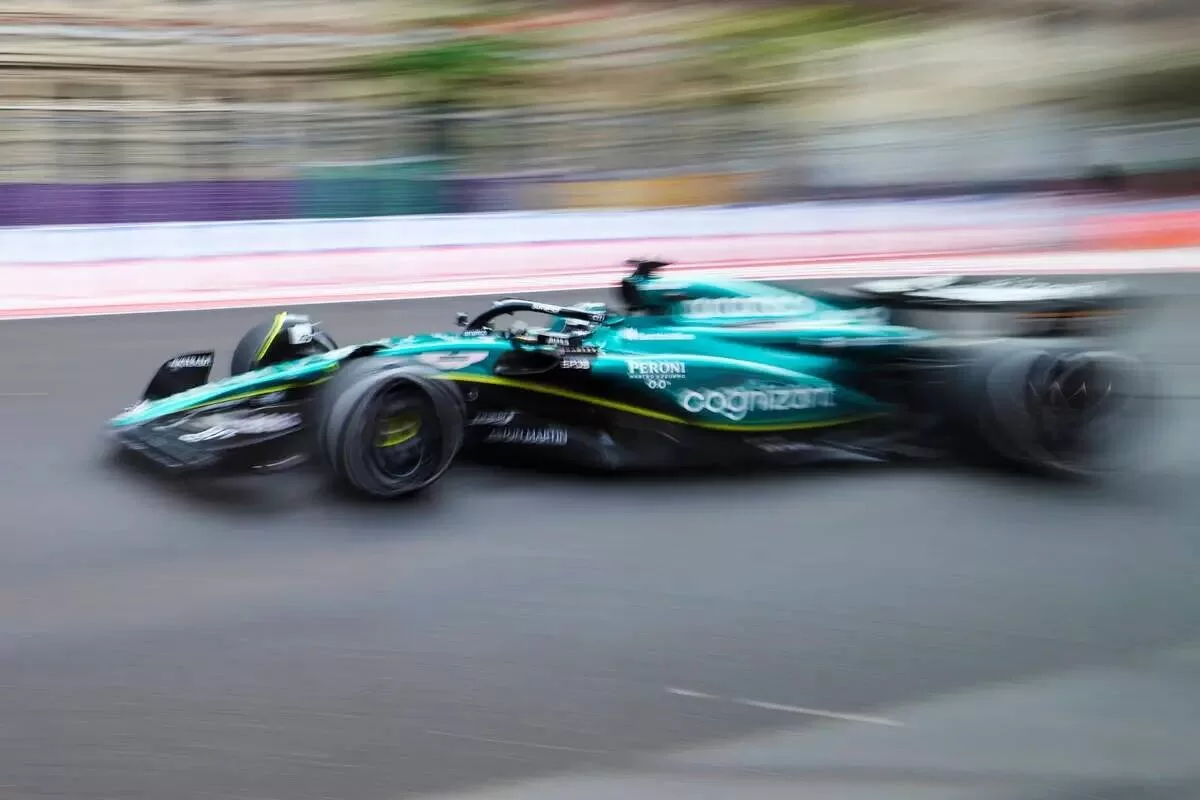Formula One cars are very fast.
Going to an F1 race is very expensive, very, very expensive.
And when F1 arrives in Las Vegas for its first race in November, it will be such a huge event that it is forecast to generate twice the revenue locally as even the Super Bowl.
And that, right there, is pretty much the beginning, middle and end of everything we know about Formula One.
But don’t worry, F1 neophyte friends, we still have seven months to catch up on racing terminology so we’re not a flat tire in the middle of all the fun.
With that in mind, here’s a starter’s guide to some F1 terms you need to know, from one racing fan to the next.
Backmarker
Meaning: A slow, hopeless car that gets lapped during the race, maybe more than once.
In simple terms: Sometimes you lay a soft egg and sometimes you lay a good egg. This is an example of the latter.
Slabs
Meaning: Weights attached to the car both to balance it and to ensure it meets the minimum weight requirements.
In simple terms: They’re like the ankle weights you wear when you jog…you know, if you’ve ever jogged.
Camber
Meaning: The angle of the tire in relation to the road. It is very important, since it influences both the grip and the wear of the rim.
In simple terms: Do you know that American football players choose their shoes based on the type of field they play on and their condition? Camber works in a similar way, adjusted to the track and the weather.
Chicane
Meaning: A portion of the track that features at least two sharp turns in close sequence in opposite directions. A safety element intended to slow down the speed of cars.
In simple terms: A curved part of the track that looks like the letter “s”, if it were hammered into wine coolers.
Dirty air
Meaning: Hot air blown out from behind a car that can negatively affect the aerodynamics of a car that is following closely.
In simple terms: Basically, it’s the opposite of drafting. Also, we’re very proud that we didn’t make the obvious flatulence joke.
DRS
Meaning: Abbreviation for Drag Reduction System, which allows drivers to increase speed by opening a flap on the car’s rear wing.
In simple terms: It makes machines “vroom-vroom” do even more “vroom-vroom”.
Drive-through penalty
Meaning: A penalty in which a driver must drive down the pit lane below a specified speed limit after committing a violation.
In simple terms: Borrowing a line from Walter Sobchak from “The Big Lebowski,” “Smokey, this ain’t Vietnam… there are rules.”
Banderas
Among the various flags flown at an F1 race:
black flag
Meaning: You have been disqualified.
In simple terms: Bad boy!
Blue flag
Meaning: You are about to be lapped and you have to let the fastest car pass.
In simple terms: Get out of the way, boss.
Green flag
Meaning: Forward!
In simple terms: Forward!
Red flag
Meaning: The race has been stopped, usually due to an accident or bad weather.
In simple terms: See: your most recent Tinder date
Yellow flag
Meaning: A notice of danger on the track.
In simple terms: Brake, it is not going to be that you collide with something else.
Grand Slam
Meaning: Also known as a Grand Slam, it occurs when a driver takes pole position, records the fastest lap, and subsequently leads every lap en route to victory. Only just over two dozen pilots have accomplished this feat.
Ein simple terms: The pinnacle of victory. It’s like winning an Oscar, a Grammy, an Emmy and a Review-Journal “Best of Las Vegas” award all in the same year.
Paddock
Meaning: The area behind the pits that houses equipment, race officials, members of the media and other personnel working behind the scenes.
In simple terms: A locker room with exhaust pipes.
Scrutiny
Meaning: A pre-race inspection that is carried out to ensure that the vehicles comply with all current regulations.
In simple terms: The racing equivalent of an athlete being tested for performance-enhancing substances. Pee in the cup, Lightning McQueen.
Yaw
Meaning: According to Formula1.com: “Term used to describe the movement of an F1 car around an imaginary vertical axis that passes through the center of the car. It is often used in conjunction with pitch (movement around an imaginary horizontal axis through the center of the car) and roll (movement through an imaginary longitudinal axis along the center line of the car).
In simple terms: Hmm, we don’t know either. We also continue to learn.



